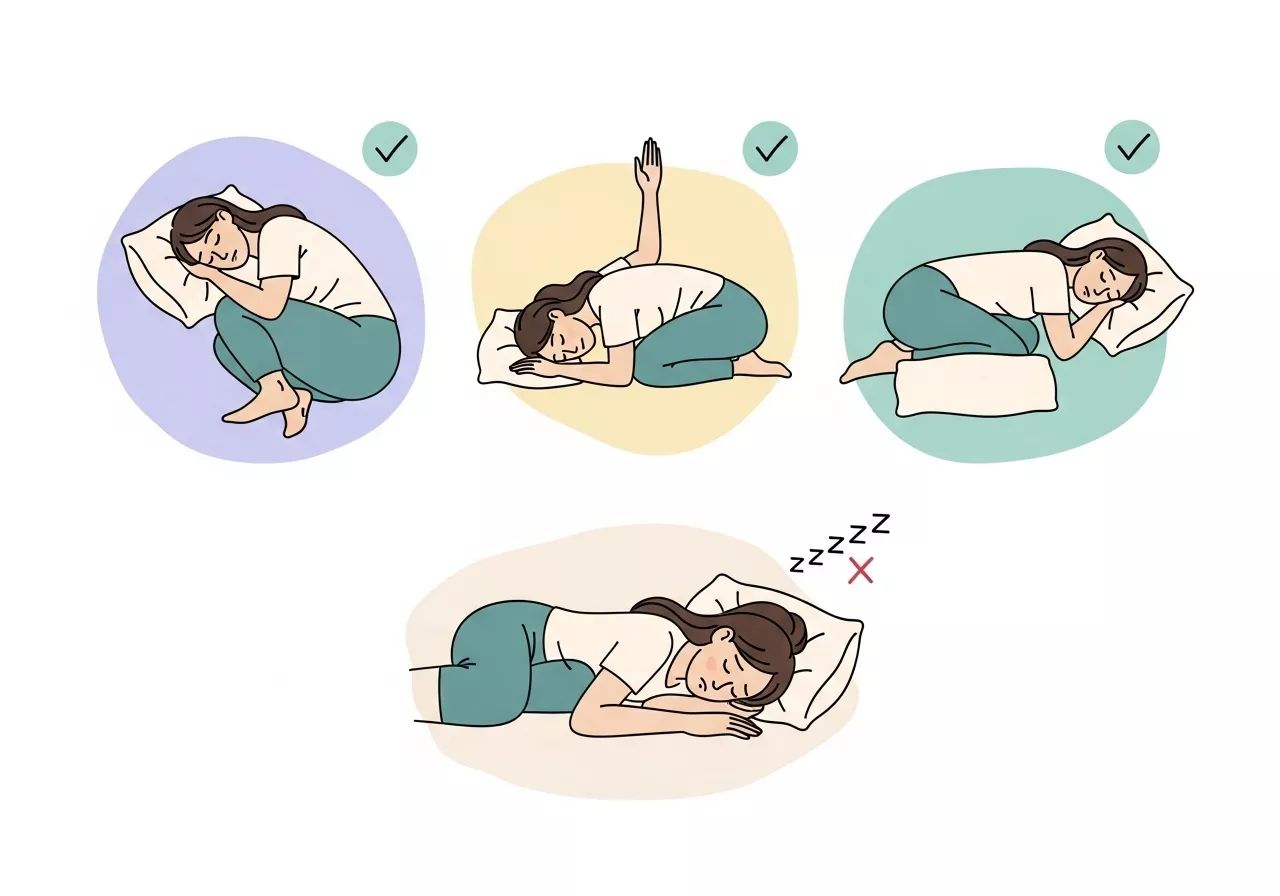Unlike traditional yoga, which often emphasizes external poses and alignment, Somatic Yoga encourages practitioners to tune into their internal sensations, exploring movement that feels natural and restorative.
This practice draws from somatic principles, which prioritize the body’s inner experience rather than its outward appearance.

By addressing chronic tension, restricted mobility, and stress, Somatic Yoga offers a holistic approach to well-being that is suitable for people of all ages and fitness levels.
Core Principles of Somatic Yoga
1. Internal Awareness:
- The foundation of Somatic Yoga is cultivating awareness of your body’s internal sensations. This “inside-out” approach fosters a deeper connection with your physical and emotional state.
2. Mindful Movement:
- Movements in Somatic Yoga are slow, gentle, and intuitive, focusing on quality rather than quantity. Each movement is performed with mindfulness, allowing you to explore your body’s range of motion without force or strain.
3. Neuro-Muscular Repatterning:
- Through conscious movement, Somatic Yoga retrains the brain and nervous system to release habitual tension patterns, improving mobility and reducing pain.
4. Personalized Practice:
- Unlike rigid sequences, Somatic Yoga encourages individuals to adapt the practice to their unique needs, making it accessible for everyone.
Key Benefits of Somatic Yoga

1. Stress Reduction
- Somatic Yoga calms the nervous system by shifting from the “fight-or-flight” response to the “rest-and-digest” state. The emphasis on breath and mindful movement helps reduce anxiety, improve focus, and create a sense of relaxation.
2. Improved Flexibility and Mobility
- The gentle, fluid movements of Somatic Yoga improve joint mobility, reduce stiffness, and enhance overall flexibility. This makes it an excellent practice for those recovering from injury, dealing with chronic pain, or simply seeking a softer approach to movement.
3. Relief from Chronic Pain
- By addressing neuromuscular tension, Somatic Yoga helps alleviate conditions like lower back pain, neck stiffness, and shoulder tightness. It retrains the nervous system to release tension and move with ease.
4. Enhanced Mind-Body Connection
- Through internal awareness, Somatic Yoga deepens the relationship between your mind and body. This connection fosters self-compassion, emotional healing, and greater self-awareness.
5. Safe for All Ages and Levels
- Somatic Yoga is adaptable to all fitness levels and body types. Its gentle movements make it particularly beneficial for seniors, individuals with limited mobility, and those new to yoga.
How Somatic Yoga Differs from Traditional Yoga
| Aspect | Somatic Yoga | Traditional Yoga |
|---|---|---|
| Focus | Internal sensations and intuitive movement | External alignment and achieving specific poses |
| Intensity | Gentle, slow, and adaptive | Can range from gentle to vigorous |
| Goal | Releasing tension and improving body awareness | Strength, flexibility, and spiritual growth |
| Approach | Personalized, emphasizes exploration | Often structured, following pre-set sequences |
| Accessibility | Suitable for all ages and abilities | May require physical fitness for some styles |
Common Somatic Yoga Movements

1. Pelvic Tilts:
- Gentle tilts of the pelvis while lying on your back help release lower back tension and improve spinal mobility.
2. Cat-Cow Variations:
- A modified version of the traditional pose, this movement is performed more slowly, focusing on the sensations in your spine and neck.
3. Supine Twist:
- Lying on your back with knees bent, gently twisting to each side releases tension in the lower back and improves spinal flexibility.
4. Slow Spinal Flex:
- Sitting or lying down, slowly flex and extend the spine, paying close attention to how each vertebra moves.
5. Shoulder Rolls:
- Gentle circular movements of the shoulders release tension in the neck and upper back, promoting relaxation.
Who Can Benefit from Somatic Yoga?
- People with Chronic Pain: Those suffering from conditions like fibromyalgia, arthritis, or lower back pain can find relief through gentle, mindful movements.
- Beginners to Yoga: Somatic Yoga is an excellent starting point for individuals new to yoga or hesitant about traditional styles.
- Seniors and Individuals with Limited Mobility: Its low-impact and adaptive nature makes it safe for those with physical limitations.
- Stressed or Anxious Individuals: The calming effect of Somatic Yoga helps reduce stress and promotes mental clarity.
How to Incorporate Somatic Yoga into Your Routine
1. Start with Short Sessions:
- Begin with 10–15 minutes of practice, gradually increasing the duration as you become comfortable.
2. Focus on One Area at a Time:
- Choose specific areas of tension (e.g., neck, shoulders, or lower back) and perform movements that target those areas.
3. Pair with Breathwork:
- Combine slow, conscious movements with deep, diaphragmatic breathing for enhanced relaxation.
4. Create a Calm Environment:
- Practice in a quiet, clutter-free space to maximize focus and minimize distractions.
5. Listen to Your Body:
- Move at your own pace, and stop if you feel discomfort or strain. Somatic Yoga is about exploration, not pushing limits.
Somatic Yoga offers a gentle yet powerful approach to movement and mindfulness, making it an invaluable tool for physical, emotional, and mental well-being.
By focusing on internal awareness and personalized movement, this practice can help you release tension, reduce stress, and develop a deeper connection with your body.
Whether you’re looking for a restorative practice or a way to alleviate chronic pain, Somatic Yoga invites you to move mindfully and feel at home in your body.
Somatic Yoga for Weight Loss: A Holistic Approach to a Healthier You
While Somatic Yoga is not typically associated with high-intensity exercise, it can play a significant role in supporting weight loss.

This gentle, mindful practice promotes physical, mental, and emotional balance, which are key factors in achieving and maintaining a healthy weight.
Here’s a detailed look at how Somatic Yoga can contribute to weight loss and overall well-being.
How Somatic Yoga Supports Weight Loss
1. Reduces Stress and Emotional Eating
Stress is a common trigger for overeating and weight gain. Somatic Yoga helps reduce stress by calming the nervous system and promoting relaxation.
Why It Works:
- Activates the parasympathetic nervous system, shifting the body from “fight-or-flight” mode to “rest-and-digest.”
- Releases tension and cultivates mindfulness, helping you identify and manage emotional eating triggers.
Example Practice:
- Diaphragmatic Breathing: Lie on your back, place your hands on your abdomen, and take slow, deep breaths. Focus on the rise and fall of your belly to calm the mind and reduce cravings.
2. Improves Body Awareness
Somatic Yoga enhances your connection with your body, allowing you to tune into hunger and fullness cues more effectively.
Why It Works:
- Helps you differentiate between emotional and physical hunger.
- Encourages mindful eating by fostering a deeper appreciation of how food nourishes your body.
Example Practice:
- Body Scan Meditation: Sit or lie down comfortably and mentally scan your body from head to toe. Pay attention to sensations like hunger or tension without judgment.
3. Boosts Metabolism and Mobility
Though Somatic Yoga is low-impact, its gentle movements can stimulate circulation, improve joint mobility, and encourage muscle activation, all of which contribute to a healthier metabolism.
Why It Works:
- Improves blood flow and oxygen delivery to tissues.
- Increases the body’s efficiency in using energy for daily activities.
Example Practice:
- Pelvic Tilts: Lie on your back with knees bent and feet flat. Gently tilt your pelvis forward and backward, feeling the stretch and engagement in your core and lower back.
4. Enhances Core Strength
Core stability is crucial for posture, balance, and overall movement efficiency. Somatic Yoga strengthens the core through subtle, mindful movements, which can indirectly support weight loss by improving your ability to engage in other physical activities.
Why It Works:
- Strengthens deep core muscles without strain.
- Supports better posture, reducing unnecessary energy expenditure.
Example Practice:
- Supine Leg Lifts: Lie on your back with one leg bent and the other extended. Slowly lift the extended leg a few inches off the ground while keeping your core engaged. Switch sides.
5. Encourages Sustainable Lifestyle Changes
Somatic Yoga promotes a holistic approach to health, emphasizing the importance of mindful living and self-compassion. This mindset shift can lead to more sustainable lifestyle choices, including regular physical activity and balanced eating habits.
Why It Works:
- Fosters a positive relationship with your body.
- Encourages small, consistent steps toward healthier living.
Example Practice:
- Mindful Movement Sequence: Perform a slow, flowing sequence of gentle stretches, focusing on the sensations in your body and the rhythm of your breath.
Somatic Yoga Movements for Weight Loss
Here are some specific Somatic Yoga movements to incorporate into your routine for weight loss support:
1. Cat-Cow Variations:
- Inhale as you arch your back (Cow Pose), and exhale as you round it (Cat Pose). Perform slowly, focusing on spinal mobility and deep breathing.
2. Spinal Twists:
- Sit or lie down and gently twist your torso to each side. Twists stimulate digestion and improve circulation, aiding in detoxification.
3. Bridge Pose Flow:
- Lie on your back with knees bent and feet flat. Slowly lift your hips off the ground, then lower them back down. This movement engages the glutes, hamstrings, and core.
4. Seated Forward Bend:
- Sit with legs extended and slowly fold forward, keeping the spine long. This pose calms the mind and stretches the hamstrings.
5. Side Stretch:
- Stand or sit with one hand on your hip and the other arm extended overhead. Lean to the side, stretching the ribs and waistline.
Tips for Using Somatic Yoga for Weight Loss
1. Consistency is Key:
- Practice 3–5 times per week for 15–30 minutes to create a sustainable routine.
2. Pair with Healthy Habits:
- Combine Somatic Yoga with mindful eating and other forms of movement, like walking or light strength training.
3. Set Realistic Goals:
- Focus on gradual progress, such as improved mobility and reduced stress, rather than rapid weight loss.
4. Listen to Your Body:
- Adjust movements to suit your comfort level. Avoid pushing through pain or discomfort.
5. Create a Relaxing Environment:
- Practice in a quiet, distraction-free space to enhance focus and relaxation.
Conclusion
While Somatic Yoga may not burn calories like high-intensity workouts, it offers a holistic approach to weight loss by addressing the root causes of weight gain, such as stress, poor body awareness, and lack of mobility.
By incorporating gentle movements, mindful breathing, and relaxation techniques, Somatic Yoga supports sustainable weight management and promotes overall well-being.
Embrace the practice as part of a balanced lifestyle and experience its transformative benefits.



